Presidents: Thomas Jefferson
Charlottesville, Virginia
Visited in 2008, 2009, 2010 and 2020.
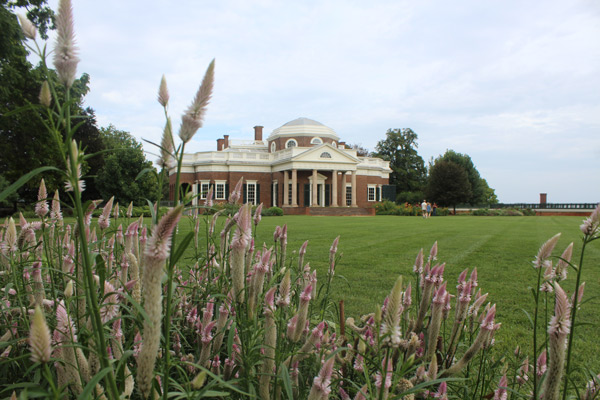
Monticello: If I had a nickel for every time ...
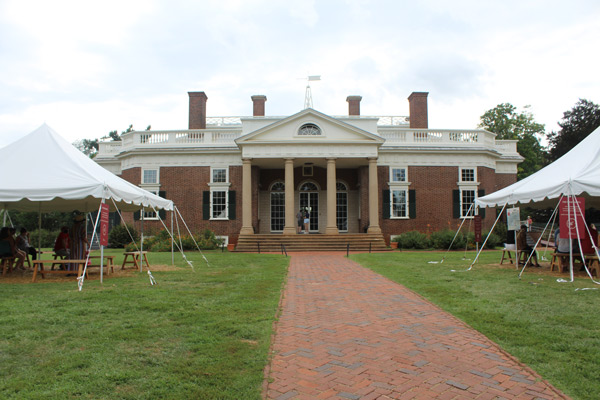
Monticello: The "front" of one of America's most famous homes.
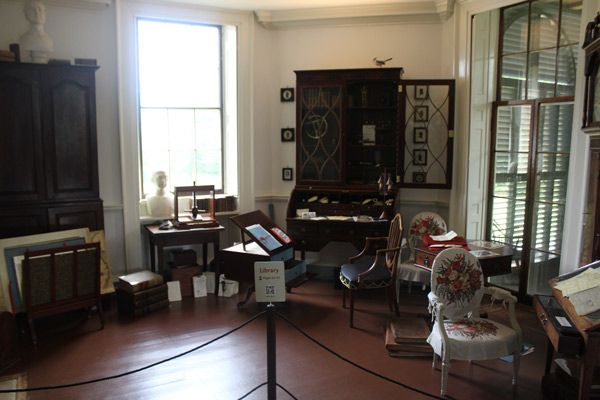
Monticello: The private library of America's most notorious book-lover.

Monticello: The alcove bed where Jefferson (spoiler alert) died in 1826.

Monticello: Would you like to play a game? The parlor is staged for entertainment.
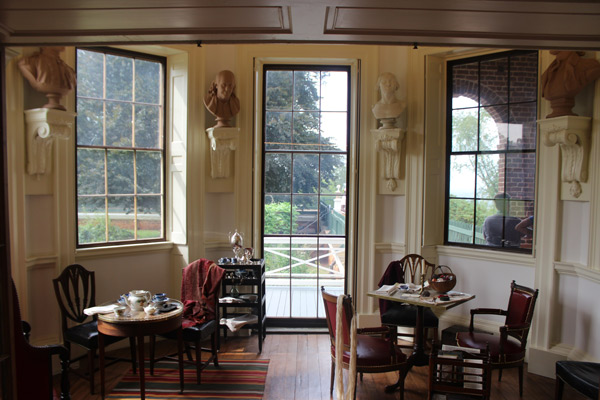
Monticello: A breakfast nook fit for a president.

Monticello: The brightly colored dining room. Note the wine dumbwaiter in the side of the fireplace.

Monticello: A re-creation of the Hemings cabin, on Mulberry Row.

Monticello: The view from the reconstructed blacksmith shop on Mulbery Row.
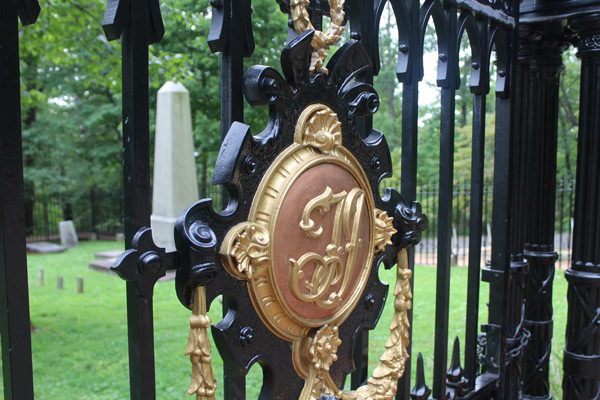
Monticello: The (locked) entrance to the Jefferson family cemetery. Tom's grave is the large obelisk.
Thomas Jefferson was a builder. He enjoyed constructing arguments, philosophies, governments, political parties and bi-racial offspring. And in his spare time, he built actual buildings. A lot of Jefferson's legacy is highly debatable, but you can't dispute a pile of bricks and mortar.
It is therefore a little disappointing that Jefferson's birthplace is a hole in the ground. The Shadwell plantation was Peter Jefferson's property, and Thomas was born there in 1743. When Peter died in 1757, the land was left to TJ once he came of age. Jefferson only spent a few years living there -- between his family's other properties and his education, he jumped all over the Commonwealth of Virginia -- and Peter Jefferson's original home (Tom's birthplace) was destroyed in a 1770 fire. These days you can't do much more than pull over on the shoulder of US-250 and take a picture with the roadside marker. There's nothing else to see.
But if you want to make a day of it, Shadwell is only six miles from something a little more awesome. To many people, Monticello is the embodiment of Thomas Jefferson -- it's right up there with Mount Vernon on the presidential home power rankings. Hundreds of millions of Americans carry pictures of the home in their pockets, on the "tails" side of a nickel. It's held up as a testament to his genius and his political philosophy.
And Jefferson was an impressive guy. He inherited 5,000 acres, a bunch of slaves and pretty decent social standing from his folks. He went to William & Mary (captain of the cheerleading squad), read law and served in the House of Burgesses. By the time the Continental Congress rolled around he had gained some renown as a thinker and was asked to help write the Declaration of Independence. From there things really steamrolled. He served in the Virginia House of Delegates, was selected as the wartime Governor of Virginia and served as the U.S. Minister to France. In the Constitutional era, he served as the first secretary of state, second vice president and third president. In his spare time, he was a farmer, inventor, architect, archaeologist, book collector, master karate fighter, university founder, Albemarle County karaoke champion, anchor of the Founding Fathers bobsled team and author. There's a ridiculous amount of information on the man, who saved copies of all 20,000 letters he wrote in his lifetime.
They try to hit all these notes at Monticello. The home has special importance because Jefferson famously designed it himself, to ridiculous detail. All the flourishes and contraptions built into the structure -- an observatory, a hidden dumbwaiter for wine bottles, a peculiarly complicated clock -- tell you something about Jefferson's curiosity and priorities. The decor, from Jefferson's personal library to the mini-museum in his entry hall, tells you even more. He was a man fascinated with knowledge and wanted to engage the people around him. The "museum" -- the first thing visitors experienced -- contains maps of foreign lands, Native American artifacts, mastodon bones, busts of famous people, and taxidermy. (One of the antlers mounted on the wall was sent to Jefferson by Meriwether Lewis -- it was a specimen collected on the famous expedition Jefferson championed.)
But if we're getting deep, the modern Monticello also reflects the reality that "Thomas Jefferson" is a bit of facade. The neat, orderly estate that you visit today never existed in Jefferson's time. The home was a construction site for two decades, as Jefferson endured long absences from Albemarle County, spotty finances and constant revisions of his own plans. (His first three years on the estate, Jefferson and his wife lived in an 18x18 single-room dwelling.) The reality of Jefferson's day-to-day existence was just as messy as the philosophical problems he bequeathed to the nation.
For example: Jefferson's genius was undoubtedly nurtured by the institution of slavery. Simply put, you tend to have a bit more spare time to read and think when you have 140 slaves to chip in around the house. (Jefferson gets credit as some kind of agrarian wonk, who experiented with hundreds of fruits and vegetables, took detailed notes on all his yields and developed a new kind of plow. But it's easier to be a brilliant and prolific farmer when you don't have to actually FARM.) Monticello, by design, hides slavery as much as possible. The "dependency" buildings you'd find at other plantations of that era were incorporated into partially subterranean wings. The places were slaves toiled on behalf of Jefferson, his family and his guests are hidden underground. The wine dumbwaiter (hidden in the side of the dining room fireplace) didn't actually eliminate much labor -- but it created a system where Jefferson's guests could get their booze without seeing or interacting face-to-face with a slave. Out of sight, out of mind. It's what you'd expect from someone who could pen the Declaration of Independence, but also own more than 600 people over his lifetime.
You can also argue that Monticello illustrates how Jefferson's great gift was aggregation, and not orignial thought. He was a great imitator; in architecture, for example, his embrace and promotion of the Palladian style greatly altered the style of American public buildings. But it wasn't anything Jefferson made up. Similarly, his thoughts on government weren't particular original -- he cribbed the big themes from European philosophers, then repackaged them for an American audience.
These are the kinds of arguments that you should have after six beers, preferably with sexually frustrated grad students.
To their credit, the folks at Monticello have been continuously adapting. The house tour has always been amazing: Jefferson left a huge paper trail that includes astonishing detail on his residence and his day-to-day existence. Few presidential sites can "interpret" the past so much authoritatively. But in the years that I've been visiting the home, the presentation on slavery and Jefferson's many contradictions has gotten better and better. Not that long ago, Jefferson's relationship with Sally Hemings was disputed. Now the stories of the Hemings family and many other slave families are a huge part of the visitor experience.
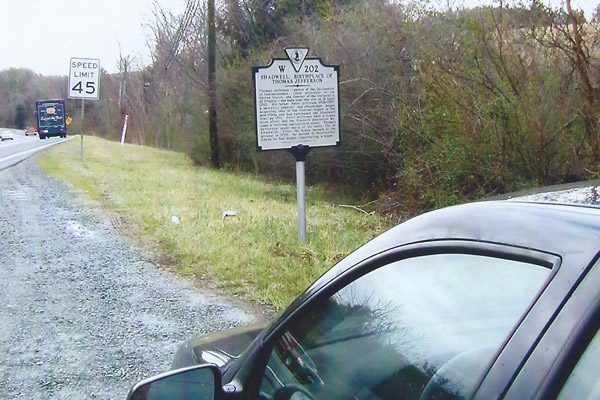
Shadwell: I saw the sign.
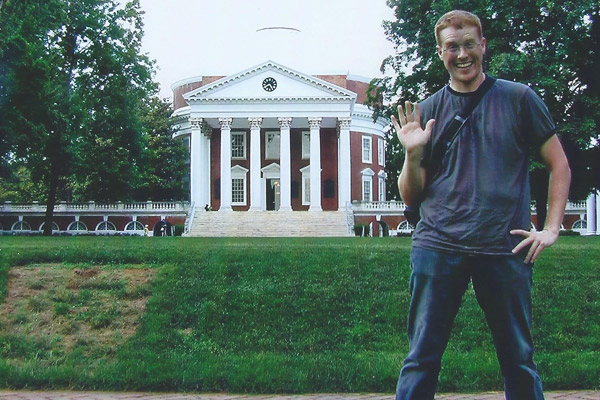
University of Virginia: A rotundo at the Rotunda
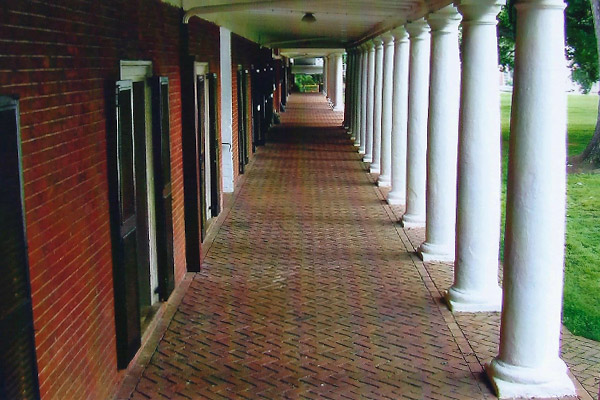
University of Virginia: Straight Jefferson on the main quad.
P.S. -- If you're going all the way to Charlottesville to see the house, you might as well hop over to the University of Virginia. Jefferson founded the school and considered it one of his most important legacies. Supposedly he kept an eye on construction by peering down from Monticello with a telescope. The Rotunda and its surroundings are all Jefferson's design, and for 200 years students have honored his memory by puking on the lawn. America, folks.
William & Mary, Williamsburg, Virginia
Visited in 2013.
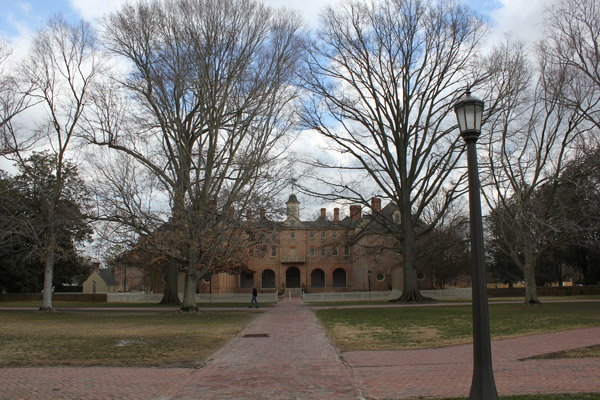
The fabled Christopher Wren building.

Inside the Wren building.
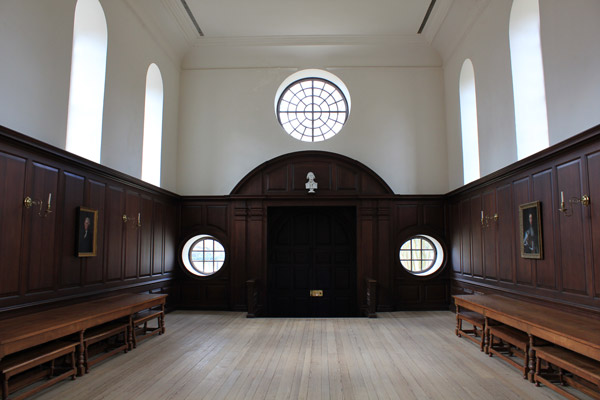
Inside the Wren building.
Some people believe that Thomas Jefferson sprang from his father's head fully formed. Less interesting people believe he actually went to college.
Jefferson's alma mater was William & Mary, which is the second oldest college in America. In Jefferson's time, it was also one of the only colleges in America; the year he was born, the colonies had something like seven schools altogether. There was no such thing as safety school, because if you didn't get into your first choice, you would certain get a disease and die during the two-week overaland journey to closest alternative.
Jefferson was actually smart, and all his family's checks cleared, so getting into William & Mary was a breeze. He started studying there in in 1760, around the age of 17. He stayed in town through his early 20s, "reading the law" and hanging out with colonial bigwigs. Williamsburg was the capital of Virginia back then (it moved to Richmond when Jefferson was governor in 1780) so the young intellectual had easy access to powerful people in the runup to the Revolution.
The main reason to visit Williamsburg today is to see people in period costumes making candles and horseshoes and that kind of thing. You take your kids to the colonial theme park, hang around until they threaten to mutiny, and then shove off to Busch Gardens, where they ride the roller coasters as you sit in the beer garden and question your vacation planning.
But Colonial Williamsburg is actually William & Mary adjascent! And W&M has thoughtfully preserved one of the grand buildings of the colonial era, which Jefferson described as a "rude mis-shapen pile." HA! Today it's called the Christopher Wren building, and it's supposedly where Jefferson lodged and boarded his first few years in town. The good folks at W&M will definitely let you stroll through if you ask nicely. Go Tribe.
Poplar Forest, Lynchburg, Virginia
Visited in 2009 and 2019.
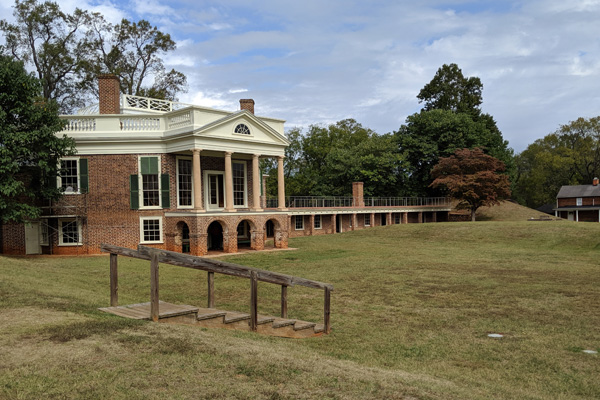
The "rear" of the house and the sunken lawn, in 2019.

The view of the front of the house, in 2009.
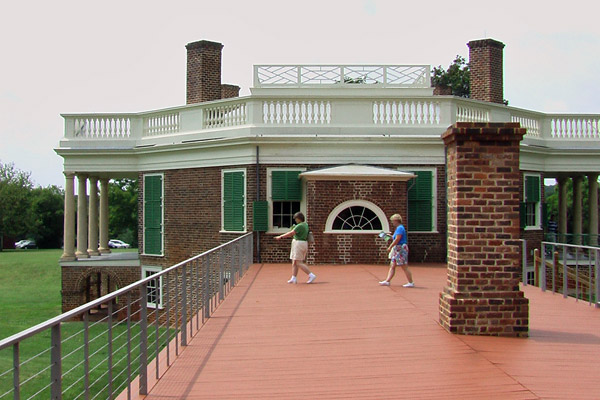
On top of the dependency wing, looking at the main home.

Greetings from the sunken lawn. Can you dig it?
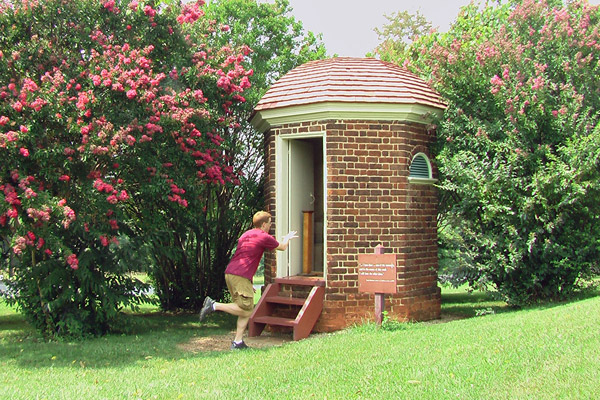
ENTER THE OCTAGON!
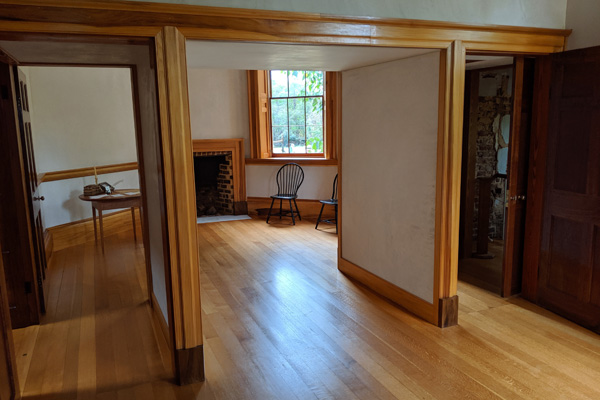
Jefferson's private room, with its weird "alcove bed" setup.
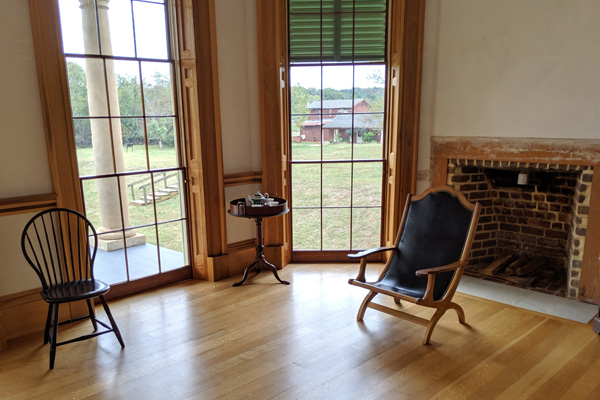
The "back" room, which might have been a study / library.

The dining room in the center, with its high ceiling and skylight.
One of the great disadvantages of being president is that sometimes, when you want to get away from your giant taxpayer-funded mansion, your private mansion on top of a mountain in the middle of nowhere just isn't private enough. We've all been there.
Thomas Jefferson's brilliant solution was Poplar Forest, a quaint little home nestled away on 4,000 acres just outside Lynchburg. A sweet little place where he could escape a few times a year and relax: just Tom, his grandchildren, and 50 to 70 slaves. Cozy!
TJ came into the property through marriage -- the way we all aspire to become rich. It was one of his choicer financial assets: he needed the income from that plantation so that he was only severely crippled by the debt racked up his other plantation. And privacy? You bet! He had used the place as getway in the past -- he stayed there when the British tried to capture him at Monticello during the Revolution. (He was then the governor of Virginia, and apparently the British didn't have the military intelligence to find out where his OTHER huge plantation was.) But during his second term as president, he actually got down to business and started work on a fine little structure of his own design.
The house at Poplar Forest is like a mini-Monticello, in that it's a vanity project that turned out pretty damn cool. It's an octagon. Jefferson toyed with getting octagons into Monticello, settling for some half-octagons on the wings and an octagonal dome chamber up top. But at Poplar Forest, freed from the demands of polite society, he was able to finally make an octagonal home that could properly harness the the dark energies of the hoary netherworld. And when the eighth son of an eighth son stands under the dining room skylight under a full moon on August 8, and makes some disparaging remarks about John Adams, then LO, THE PROPHECY SHALL BE COMPLE ...
Whoops. Can't give away the secret. Their rules. Sorry.
The house is in the Palladian villa style. It has a big, 20x20 square dining room in the center with huge high ceilings, surrounded by four octagonal rooms and a few more corner spaces to round out the exterior octagon. That should be enough octagons, right? Right?
WRONG! Even the crappers were octagonal, because Jefferson wanted you to know how clever he was, even when you were taking a dump. But oddly enough, for all the intriguing flourishes (and the big honking dining room), Poplar Forest wasn't really a public, showy place. Jefferson built Poplar Forest for Jefferson. And that's what makes it neat.
He started building the place in his 60s. He had decades of experience messing around (and screwing up) with other projects, so he knew what worked -- for example, the wing of dependencies on one side of the house and the half-sunken basement are a straight lift from Monticello. He didn't have to satisfy the demands of public use or plantation culture. Basically, he had fun with it. Following all the big rules of the Palladian style, he was still able to cherrypick his favorite elements from all kinds of sources, and the result seems quirky, cozy and suprisingly modern. After a lifetime of studying architecture, managing construction projects and touring the gardens of England and France, this is what one of the best minds in American history came up with. That's worth seeing.
That said, you should be aware of exactly what you're seeing. The property was in private hands for a long while, and the curators (as of 2019) are in the middle of the decades long restoration process. When I first visited in 2009, it was more or less an empty house where the tour was heavily focused on architecture. When I returned 10 years later, they had filled in a few pieces of replica furniture, but it was still mostly empty. But it still gives you a definite idea of Jefferson's personality.
- The quest for privacy is very clear. Guests can't stay in bedrooms that don't exist. Jefferson included a room for himself, a room for his daughters, and that was it.
- Jefferson had a fixation at Monticello with making his servants (i.e. slaves) invisible to guests, and he continued that at Poplar Forest. The octagon setup made this tough, as the dining room was in the center of the house and you had to go through bedrooms or common areas to reach it. So Jefferson sometimes deviated from symmetrical perfection to put up extra walls or barriers that would minimize interaction with slaves.
- Jefferson's design called for a sunken yard, which was probably trendy in Europe and also allowed access to the basement rooms and the dependencies. But rather than pick a hillside to build into -- and they have hillsides on the property -- he paid a slave extra to dig out the whole yard in his spare time. It took a few years.
- The "Palladian" ideal would have had a structure flanked by two wings. Jefferson only had the need (or the money) to build one wing for the dependencies (like the kitchen). To keep the symmetry he had two big mounds created as the end-points of the design, and the "missing" wing was replaced with orderly rows of trees. So the design wasn't perfect, but it did have a spin that Jefferson probably saw as "American" -- in that it reflected the continent's natural or agrarian gifts. Remember, Jefferson made a great name for himself by making expedient adaptations of other people's ideas. In all things!
I don't know that Poplar Forest is a good "starter" site for people learning about Jefferson, but if you know a little already it definitely adds a bunch of flavor. The guy wanted things the way he wanted them, and despite being almost famously practical, he'd ignore sane impulses to get what he wanted. Plus he bought almost everything on credit! And maybe, just maybe, that makes him the most American president of all. USA! USA! USA!
POPLAR FOREST FACTS!
- Most of the property was sold at the time of Jefferson's death to help repay his crushing debts, which might have been party caused by BUILDING TWO FANCY HOUSES IN THE MIDDLE OF NOWHERE AT THE SAME TIME. I mean, duh.
- The dining room table was octagonal, and Jefferson would insist on eight-course meals off eight-sided plates, with prayers to the Spider Queen Loth between each course.
- As a fan of the "lazy susan," Jefferson had several tables with rotating tops at Poplar Forest. This inspired one woman on my tour to let us know that Jefferson had INVENTED the lazy susan, giving me instant PTSD flashbacks to a Mount Vernon tour where someone insisted Jefferson had invented the mimeograph in Washington's office. Contrary to popular belief, Jefferson was not an inventor. He made some kind of plow, and that's about it. He borrowed lots of ideas from other people, in everything from architecture to the Declaration of Independence. His skill was as an aggregator and presenter of knowledge, and in the traditional sense he was not a brilliant creative mind. To sum up, SHUT IT, lazy susan lady.
- Jefferson hated staircases, and included them in his designs only when attempts to breed a race of wall-climbing slaves failed.
The Library of Congress, Washington, DC
Visited just about every year.

Who has time to read? Apparently Thomas Jefferson.
The British, never the reading type, rudely burned Washington D.C. to the ground in the war of 1812, taking with it the original congressional library. Thomas Jefferson, who needed cash to fund his lavish ... uh, book-buying habit, sold his personal library (something like 6,000 books) to the country. This seed grew into the new Library of Congress.
A lot of those books have been destroyed by time, fire, or jerks who never returned them, but everything that's left is now on display at the Jefferson Building of the Library of Congress. I first got to check out the display the in 2008, and it's sort of a kick to see the private collection of our nation's most beloved nerd. The books are arranged in a circle, according to Jefferson's personal classification system. That means all French erotica is at eye-level and everything else is just sort of tossed on the shelves at random.
Still, totally worth stopping in to see.
